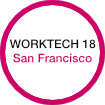What’s on your mind?
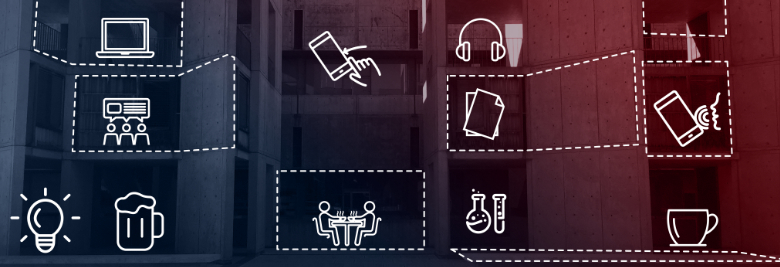
Shining a light on architecture and the brain
It’s harvest season in the northern hemisphere! These few precious weeks before the winter cold takes hold are times of plenty. Amongst the season’s bounty is a hearty helping of goodies for those who are passionate about workplace. Grab a mug of hot apple cider and cuddle up with this month’s "On Our Minds", where we tip over the cornucopia of fascinating findings from this year’s conference of the Academy of Neuroscience for Architecture (ANFA).
On our minds
The changing seasons always offer an opportunity for reflection—a chance to reconnect with the big picture. The spaces we work in aren’t just about the P&L. Design choices impact the lives of real people every day. To whit: Winston Churchill believed that the design of the parliamentary chambers influenced the structure of government itself, uttering a bit of architectural wisdom: "We shape our buildings, and afterwards our buildings shape us."
We were happy to find kindred spirits at the recent conference of the Academy of Neuroscience for Architecture (ANFA). The confluence of two of our favorite fields, this conference boasts an agenda that is chock-a-block with research into the relationships between the spaces we inhabit and the workings of the human brain. As befits the topic, the conference is held at the Salk Institute for Biological Studies, a modern monument to science and design, also recently featured at our AIANY Fall Film Social.
This wasn’t our first pilgrimage; we’ve been huge fans of ANFA for years! In fact, PLASTARC shares a birthday with their conference. We were inspired to write about the budding field of neuroarchitecture by their 2015 event in Brooklyn. We shared research of our own at the 2016 ANFA conference, collaborating with environmental psychologist Sally Augustin to examine the effects of glass walls—frequent features of coworking spaces—on the behavior of occupants.
This year, PLASTARC presented findings of amenities research we conducted in coworking spaces. We focused on features that support wellness, including those that provide a place for nursing and rest. Here are a few other talks that piqued our interest this year:
What can we measure, and what does it mean?
This is where it all starts, as far as we’re concerned. Without good metrics, people who design and maintain spaces are grasping at straws. Yet, as data sources multiply, how do we sort the wheat from the chaff? How do we select the measures that actually matter?
Our top pick from this block was Stefano Andreani’s work on physical proximity and states of mind. We’ve done some thinking about this ourselves—propinquity is one of our "Four P’s" of workplace mental health.
Architecture of justice
We were captivated by Huda Akil’s keynote address: "How Incarceration Affects Memory, Emotion, and Stress". As research reveals more about the effects of spaces on the human mind, we must consider how they shape outcomes in our justice system. It’s well-known that isolation creates psychological trauma, but design can also play a more subtle role, setting expectations of behavior and relationships. If the true objective of the justice system is to return people to society as fully-rehabilitated participants, do the designs of the spaces support that objective?
Nature and the Workplace
We love biophilic design, and this year’s conference dedicated substantial time to the psychological impact of natural patterns. We were reminded of a favorite architecture book,
The changing seasons always offer an opportunity for reflection—a chance to reconnect with the big picture. The spaces we work in aren’t just about the P&L. Design choices impact the lives of real people every day. To whit: Winston Churchill believed that the design of the parliamentary chambers influenced the structure of government itself, uttering a bit of architectural wisdom: "We shape our buildings, and afterwards our buildings shape us." We were happy to find kindred spirits at the recent conference of the Academy of Neuroscience for Architecture (ANFA). The confluence of two of our favorite fields, this conference boasts an agenda that is chock-a-block with research into the relationships between the spaces we inhabit and the workings of the human brain. As befits the topic, the conference is held at the Salk Institute for Biological Studies, a modern monument to science and design, also recently featured at our AIANY Fall Film Social. This wasn’t our first pilgrimage; we’ve been huge fans of ANFA for years! In fact, PLASTARC shares a birthday with their conference. We were inspired to write about the budding field of neuroarchitecture by their 2015 event in Brooklyn. We shared research of our own at the 2016 ANFA conference, collaborating with environmental psychologist Sally Augustin to examine the effects of glass walls—frequent features of coworking spaces—on the behavior of occupants. This year, PLASTARC presented findings of amenities research we conducted in coworking spaces. We focused on features that support wellness, including those that provide a place for nursing and rest. Here are a few other talks that piqued our interest this year: What can we measure, and what does it mean? This is where it all starts, as far as we’re concerned. Without good metrics, people who design and maintain spaces are grasping at straws. Yet, as data sources multiply, how do we sort the wheat from the chaff? How do we select the measures that actually matter? Our top pick from this block was Stefano Andreani’s work on physical proximity and states of mind. We’ve done some thinking about this ourselves—propinquity is one of our "Four P’s" of workplace mental health. Architecture of justice We were captivated by Huda Akil’s keynote address: "How Incarceration Affects Memory, Emotion, and Stress". As research reveals more about the effects of spaces on the human mind, we must consider how they shape outcomes in our justice system. It’s well-known that isolation creates psychological trauma, but design can also play a more subtle role, setting expectations of behavior and relationships. If the true objective of the justice system is to return people to society as fully-rehabilitated participants, do the designs of the spaces support that objective? Nature and the Workplace We love biophilic design, and this year’s conference dedicated substantial time to the psychological impact of natural patterns. We were reminded of a favorite architecture book, A Pattern Language Stephanie Park, Senior Lead Strategist of WeWork, gave us a rare glimpse behind the scenes of a WeLive space. She discussed the social network effects of the space’s unique design. For instance, by placing the video-arcade-laundrettes so that they are shared by multiple floors, the space encourages groups to intermingle and build relationships. Learning environments As we shared at WORKTECH Barcelona, people who design and build the spaces we work in could benefit from studying the education sector. One of the most intriguing talks was "I Spy with my Little Eye: A Child-led assessment of the School Built Environment". It featured a forthcoming app that will let kids say what they do and don’t like about their space, take pictures, and tag locations. We’re interested to see what this reveals; no one is more qualified to evaluate the user experience of a space than the user. We also appreciated Kyuho Ahn’s work on designing school environments for children with autism spectrum disorders. Sensory differences can cause people to experience the same environment in very different ways. By studying the experiences of and designing for people who are hyper- or hypo-sensitive, designers can build a better multisensory experience for everyone. We were reminded of this chair, which is one example of using design to enhance focus. Design for Healing and Well-Being Natural daytime light can have a large effect on both wellness and performance. The underlying neurological mechanisms were filled in by Marilyne Andersen and Victoria Soto Magain in their talk, "Perceived And Yet Not Seen: Non-Visual Effects in Daylight Spaces". Dr. Satchin Panda’s talk, "Impact of Shift Work on Circadian Systems", highlighted the role of daylighting in health and wellness. A salient point of his: we’re all shift workers now. Though people who work 9-5’s may not think of themselves that way, always-on communication, jet lag, and the extra work they take home can cause similar disruptions to circadian rhythms. Caffeine consumption, unhealthy eating, lethargy, and other negative health effects are linked to our disconnection from the sun. Urban space and place-making The evolution of a place is inseparable from its history. Organic indigenous urban spaces (like actual cities) are inherently different from top-down designs, like planned communities or attractions like Las Vegas or Disney Resorts. Hospitality and entertainment environments were mentioned frequently by speakers, which reflects a welcome focus on a service model. this articleFrom the archives
In Case You Missed It
This month, we had the good fortune to help kick off a couple of new events. We also set another place at the PLASTARC table: welcome Mike!
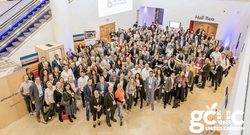
GCUC UK
At the inaugural GCUC UK in London, we discussed the opportunities corporates offer to coworking with Nick Livigne of Verizon, Elliot Gold of Work.Life, and Gabor Nagy of Haworth.
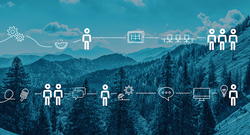
Workplace Wellness through Autonomy
In CoreNet’s Pulse blog, we wrote about the benefits of creating spaces that provide people with the ability to choose how and when to do their work.
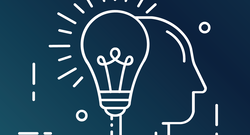
Tech + Workplace Conference
The Architect’s Newspaper hosted their first Tech+ conference, where PLASTARC discussed new technologies that can contribute to healthy workplace interiors.
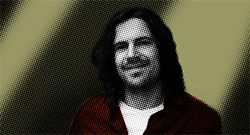
Mike Sayre joins the team
As content manager, PLASTARC team member Mike supports our efforts with writing and editing, providing plenty of pith with a dash of panache.
Looking Ahead
Autumn reminds us that change is the only constant—so we’re always looking to build connections and stay on top of the latest on work and place. Here’s where you might see us in the next few weeks:



